Cats, those enigmatic and beloved creatures, communicate with us in a variety of ways, and one of the most prominent is through meowing. While cats primarily use scent and body language to communicate with each other, meowing is largely reserved for their interactions with humans. Understanding the nuances of your cat’s meows can deepen your bond and help you respond to their needs more effectively. Let’s explore the fascinating world of “Meowing Cats” and decipher what your feline friend is trying to tell you.
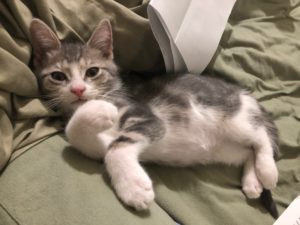 kitten meow
kitten meow
The Kitten Meow: A Call for Care
The “kitten meow” is a high-pitched, short, and undeniably endearing sound. It’s the primary vocalization kittens use to communicate with their mothers. These tiny meows are essentially cries for attention, signaling needs such as hunger, coldness, or a desire for maternal care. Interestingly, as cats mature and transition into adulthood, they generally cease meowing at each other. The persistence of meowing in adult cats is largely attributed to domestication and their learned ability to communicate with humans. Your adult cat may surprise you by reverting to that sweet kitten meow when they want your attention, often as a subtle yet effective way to get your focus. For example, you might hear this gentle “mew” first thing in the morning as your cat nudges you to get out of bed and serve breakfast.
The Welcome Home Meow: A Cheerful Greeting
Coming home to a happy, meowing cat is one of the joys of feline companionship. This “welcome home meow” is often a series of meows, sometimes accompanied by enthusiastic body rubs against your legs. Certain breeds, like Siamese cats, are particularly known for their talkative nature and diverse repertoire of meows. For these vocal breeds, the greeting meow might be more elaborate and expressive. Think of it as your cat’s way of saying, “I missed you!” and re-establishing their connection with you after your absence. Pay attention to these welcoming vocalizations; they are a clear sign of your cat’s affection and happiness at your return.
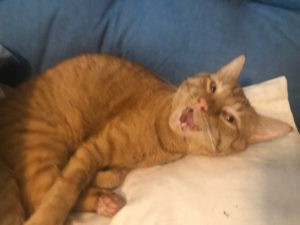 cat hungry meow
cat hungry meow
The Answer Back Meow: Engaging in Conversation
Cats are intelligent creatures, and many learn to associate words and phrases with specific actions. The “answer back meow” is a perfect example of this learned communication. If you consistently ask your cat a question, such as “Do you want to eat?”, before preparing their meal, they will likely begin to associate the question with food. In response, you might hear a long, high-pitched “meowwwwww” – a clear vocal affirmation. This type of meow demonstrates your cat’s understanding and willingness to “talk back” to you. Training your cat to answer back is quite simple and relies on positive reinforcement. Ask a question, and immediately follow it with a rewarding action, like offering a treat or food. Repetition and consistency will help your cat learn to respond with an enthusiastic meow, turning interactions into fun “conversations”.
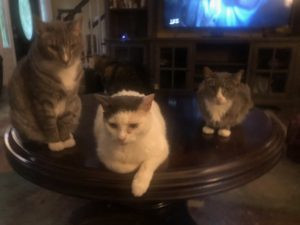 the cats meow
the cats meow
The Need for Attention Meow: Seeking Interaction
Sometimes, a cat’s meow is simply a direct request for attention. This “need for attention meow” can manifest in various ways, often depending on the cat’s personality. Some cats might become more physically demonstrative, jumping onto furniture to be at eye level or rubbing against your legs while meowing insistently. These meows are often longer and more drawn out, sometimes repeated in a series. Paired with body language like a bowed head or direct eye contact, it’s a clear signal that your cat is seeking interaction, whether it’s playtime, petting, or simply your companionship. When your cat looks at you and meows, consider it an invitation to engage and strengthen your bond.
 help me
help me
The Meow of Complaint: Expressing Dissatisfaction
The “meow of complaint” is unmistakable – a loud, drawn-out, and often wailing sound of protest. This type of meow emerges when your cat is unhappy about something, usually because they are being denied something they want. Perhaps they’re excluded from a room, their food bowl is empty, or they desire something out of reach. Cats are remarkably persistent, and complaint meows can sometimes continue for extended periods until their “grievance” is addressed. Clever cats quickly learn that these insistent meows can be effective tools to train their humans to fulfill their desires. Understanding this “protest meow” is crucial for addressing your cat’s needs and preventing potential behavioral issues stemming from frustration.
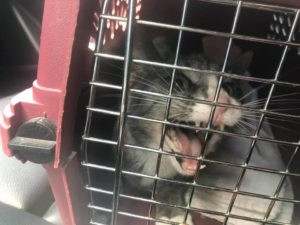 i need you meow
i need you meow
The Help Me Meow: Signaling Distress
The “help me meow” is a more urgent and concerning vocalization. While it can sound similar to the kitten meow in its high pitch and shortness, it often carries a frantic quality. These meows are typically loud and sharp, sometimes ending on a questioning note, conveying a sense of distress or disorientation. A “help me meow” might occur if your cat is trapped, injured, or in an unfamiliar or frightening situation. It’s essential to pay close attention to this type of meow, as it indicates that your cat needs immediate assistance. Investigate the source of the meowing to ensure your cat is safe and address any potential emergency.
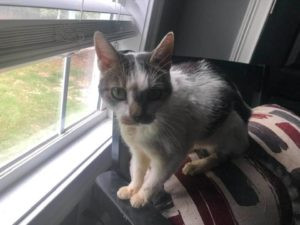 where am I
where am I
The Senior Meow: Age-Related Vocalization
As cats age, some experience an increase in vocalization. This “senior meow” can be characterized by seemingly incessant meowing, sometimes occurring when the cat appears to be alone and without any obvious reason. While it can be a normal part of aging, it’s crucial to rule out underlying medical causes for sudden or excessive vocalization in older cats. Conditions like pain, cognitive dysfunction (feline dementia), or sensory decline (especially vision loss) can contribute to increased meowing. A veterinary check-up is recommended for senior cats exhibiting new or increased vocal behavior to ensure their well-being and address any potential health issues.
Conclusion: Listening to Your Meowing Cat
Deciphering the meows of cats is an ongoing lesson in feline communication. By paying attention to the context, pitch, and pattern of your cat’s meows, you can gain valuable insights into their needs, desires, and emotional state. Understanding the language of “meowing cats” strengthens the bond between you and your feline companion, fostering a deeper, more meaningful relationship built on mutual understanding and communication.


